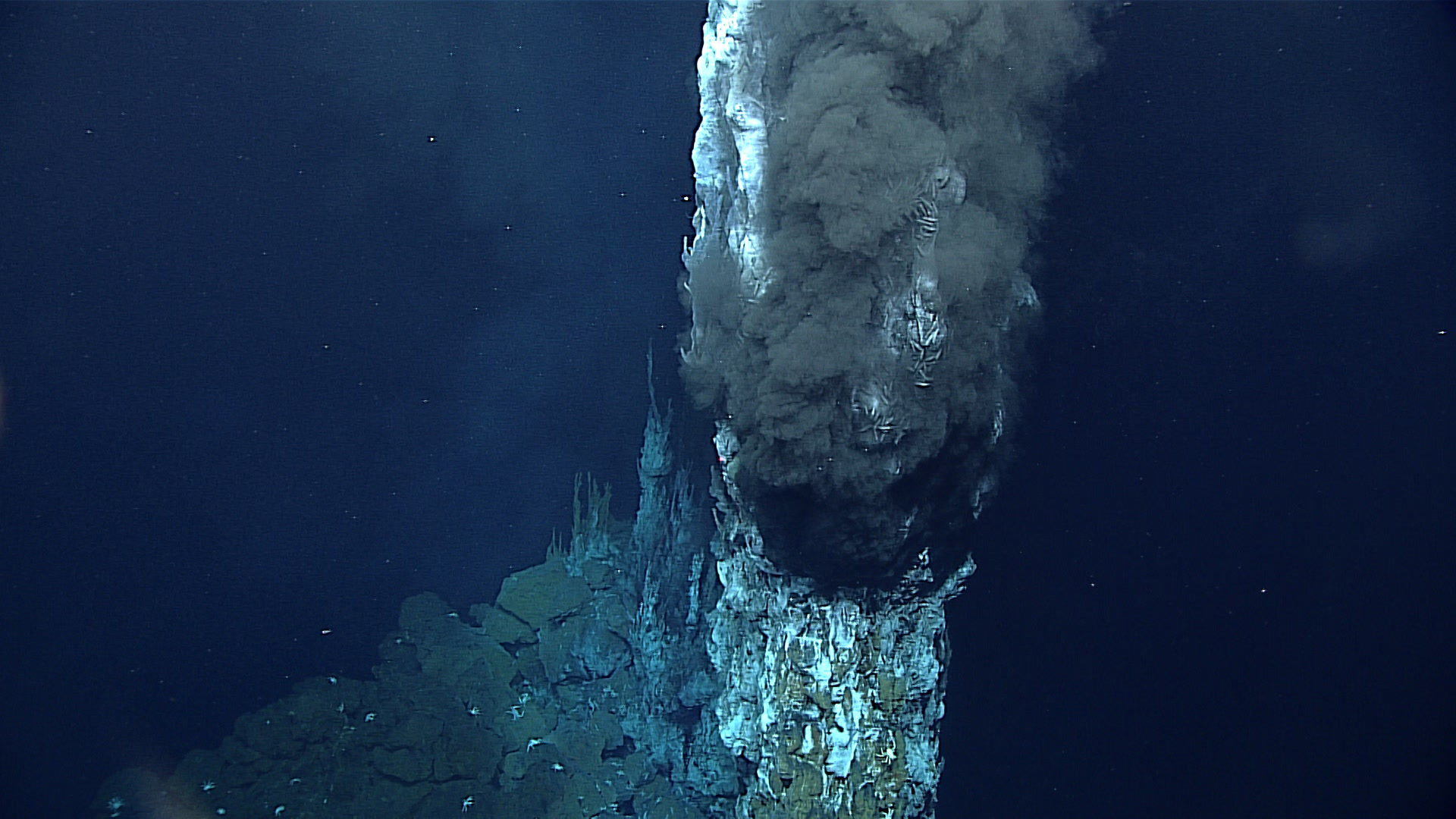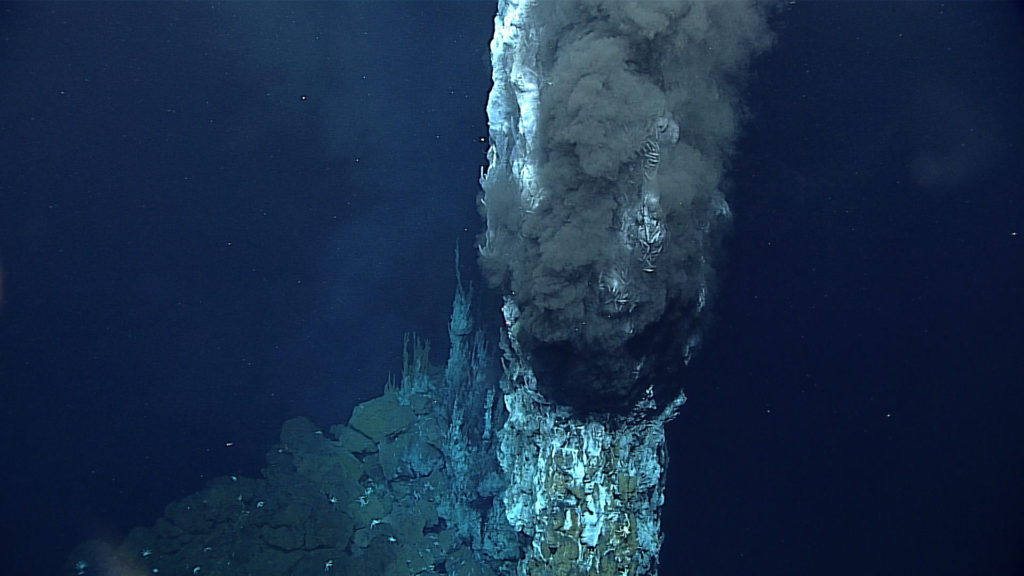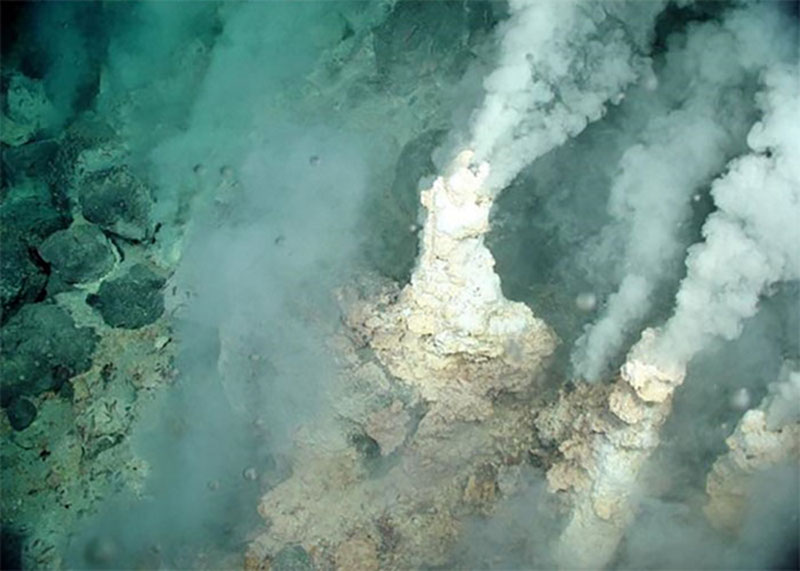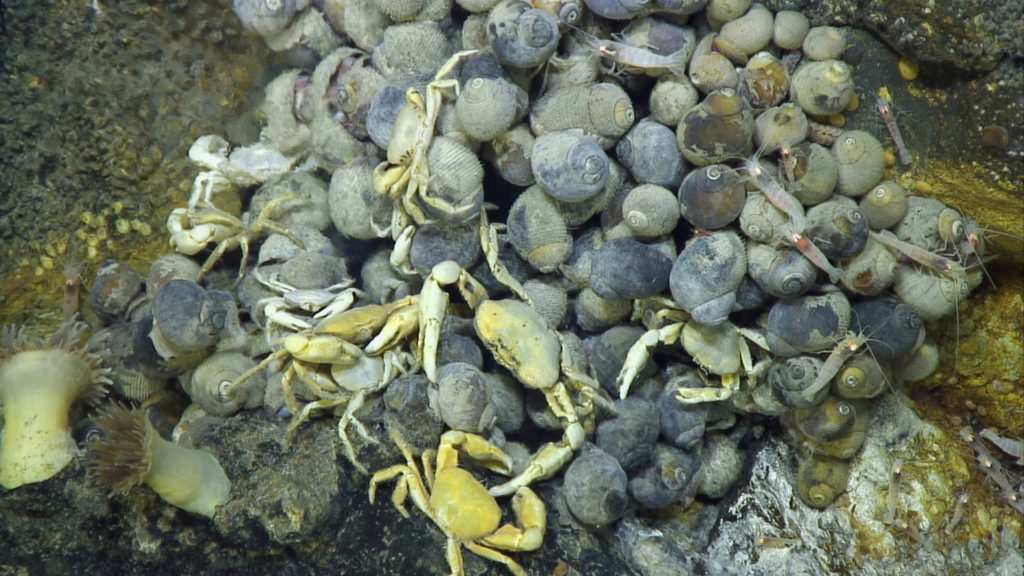Topic
Hydrothermal Vents

Hydrothermal Vents
One of the most exciting and significant scientific discoveries in the history of ocean science was made in 1977 near the Galápagos Islands off the coast of Ecuador.
Here, at a depth of 2,500 meters (8,250 feet) ocean explorers first sighted hydrothermal vents, openings on the ocean floor from which heated, mineral-rich water emerges. This sighting was a phenomenon that had been predicted but never before confirmed. To their amazement, the scientists also found that these vents were surrounded by large numbers of organisms that had never before been seen. A diverse ecosystem was thriving here—in the absence of the sunlight previously thought to be required to sustain all life!

Where Do Hydrothermal Vents Form?
Earth’s tectonic plates move on a hot flowing mantle layer called the asthenosphere, which is several hundred kilometers thick. Heat within the asthenosphere creates convection currents that are thought to cause the tectonic plates to move several centimeters per year relative to each other. Transform-fault plate boundaries occur where two plates slide horizontally past one another. Areas where tectonic plates are moving apart from one another are called divergent plate boundaries, or seafloor spreading centers. Examples of these regions include the Mid-Atlantic Ridge and areas in the Indian Ocean.
Convergent plate boundaries form where plates collide with one another. These are often the location of subduction zones. The “Ring of Fire” is located along the continental margins of the Pacific Ocean, where the Pacific plate is colliding with the continental plates. Submarine volcanism at divergent and convergent plate boundaries produces hydrothermal venting.

How Do Hydrothermal Vents Form?
Hydrothermal vents are the result of sea water percolating down through fissures in the ocean crust near spreading centers or subduction zones. The cold seawater is heated by hot magma, and re- emerges to form the vents. As the seawater is heated, some chemicals (such as magnesium and sulfate ions) are removed, while many others (such as sulfur, copper, zinc, gold, iron, and helium) are transferred to the water from the hot crust material. The water rising out of the vents may reach temperature higher than 400°C (750° F), but high pressure in the deep ocean prevents the water from boiling.
As super-heated, metal-infused hydrothermal fluids rise, they mix with near-freezing seawater. Rapid chemical reactions cause sulfur and other minerals to precipitate. They may form chimneys or towers as well as mineral-rich deposits on the seafloor.
“Black smokers” are chimneys formed from deposits of iron sulfide, which is black. “White smokers” are chimneys formed from deposits of barium, calcium, and silicon, which are white.


What Lives at Hydrothermal Vents?
Vent microorganisms, including bacteria and archaea, use the chemical-rich soup spewing from hydrothermal vents as a source of energy, rather than sunlight, in a process called chemosynthesis. These microbes are the basis of the food web that supports life in a diverse vent ecosystem that may include tubeworms, shrimp, clams, fish, crabs octopods, and other life. In this environment, animals are adapted to live in total darkness and to withstand extreme ranges of water temperatures; pressures hundreds of times that at sea level; and high concentrations of what would nomally be toxic chemicals.

Vents and vent fields can be short-lived, due to the tectonic and volcanic activity typical of plate boundaries, although some areas of hydrothermal activity are thought to have been active for hundreds, if not thousands, of years. Likewise, the biological communities living on and around hydrothermal vent fields can also be long- or short-lived. Even if a vent ecosystem is destroyed by volcanic activity, new life can quickly colonize and repopulate the area if a magma heat source is provided.
Scientists have determined that life on Earth began approximately 3.8 billion years ago and hypothesize that this first occurred in the ocean’s hydrothermal vents. Studying life at hydrothermal vents provides clues to help scientists learn more about the origins of life on Earth—and potentially on other planets.
